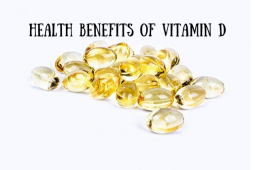Fitness Fans Guide to Edible Berries

Berries are a Super Food with Both Health and Fitness Benefits
Fashions for superfoods come and go. When it comes to berries, the fitness / health benefits are just starting to become known. Berries have been popular for years. They have a role in brain function, are full of flavonoids – and according to some research are linked to lower incidence of cancer.
Once you add in the delicious recipes – there is plenty to like.
This page covers berries in the context of your health and fitness. There is a lot to get through. I have divided the sections as follows: First, a look at what is a berry and what is not (you are in for a surprise here!). After that I have listed the main benefits of a diet rich in these. Next, a list of the common types of berry. Finally, you will find some ideas on how to make this healthy food part of your balanced diet.

What Is a Berry… and What is Not?
Let’s start with something that shocked me first time around… Strawberries are not berries. Neither are raspberries or blackberries!
Before your world comes crashing down, these are still good for you. They contain high levels of vitamin C, anti-oxidants and fibre. Strawberries are categorised as ‘Aggregate Fruits’. This refers to the way they grow, rather than them being lesser than normal fruits in any way.
Berries have an obscure biological definition. They need to be grown from a single flower ovary. Usually, the seed is inside. The outside part encourages animals to eat them, scattering the seeds far and wide – and helping the plant species spread.
There are a lot of berries; blueberries, cranberries, elderberries and gooseberries are the best known. Most researchers also include the ‘currant’ family under the berries umbrella. This expands to blackcurrants and redcurrants.
By the strictest of definitions there are some familiar foods which are also berries. These include avocados, tomatoes, bananas and even aubergines (egg plants). This article sticks to the smaller, darker and more nutrient rich types.
Health Benefits of Berries
It feels like new benefits are being discovered by researchers every few months at the moment. Some areas have been tested in depth, while other potential advantages are newly discovered. You should treat this as a work in progress. Even better, there are no published down sides to eating berries. This assumes you stay away from poisonous varieties, and consume moderate amounts of those.
Flavonoids: Anti-oxidant properties of berries has been known for a long time. They are dense in a category of molecules which protect cell health. These allow is to remove free radicals and keep our cells healthy.
Protecting the Heart: Studies have shown that regularly consuming berries lowers the incidence of heart disease. Since that is one of the big killers of our times, this must be a positive. More research is needed here.
Cancer Prevention: The other big killer, cancer, has been shown to be less prevalent in people who have berries in their diet in at least one study.
Sore Muscles?
Muscle Soreness Reduced: This one is for fitness fans out there who like resistance training / weight training. A side effect of adding muscle definition is delayed onset soreness. Evidence shows that berries help to reduce this. It is through the reduction of inflammation in the muscle fibres.
Alzheimer’s / Dementia: Another big and scary disease, and another potential gain for berries. Some evidence suggests that berries help with cognitive function, alertness and memory. These are big benefits without the need to take prescription drugs.
Cholesterol: Getting the right balance of fats in your diet is key long-term health. Berries come up trumps here. They increase ‘good cholesterol’ and reduce the bad one.
This really is the tip of the iceberg when it comes to berries. I am confident in predicting that they will get the label of ‘the superfood we have been eating all along’.

Common Types of Edible Berry
Blueberries: The species that became domesticated and popular today started in North America. Blueberries have a vivid, almost purple colour. A mind-blowing 525,000 tonnes were produced worldwide (2014 figures). Most are made into jams and sweet pies. While delicious, the health benefits of consuming these in muffin form (thinking of a popular coffee chain here!) are almost certainly reduced by the high sugar content!
Cranberries: These are from the same family as blueberries – known as Vaccinium. They are best known in the form of a sauce eaten with roast turkey. These days, cranberry juice is becoming more popular. Cranberries were thought to have a role in reducing urinary tract infections. Unfortunately, a major study by the European food safety authority concluded that there was no relationship.
Elderberries: For some of us, this conjures images of hideous homemade wine! These are rich in vitamin C, and often used to make syrup, which is used as a base for deserts. It has regional uses, some countries make soft drinks from elderberries, while in Germany it is used in popular deserts.
Gooseberries: These are be eaten without cooking, though are more commonly used in deserts. I remember apple and gooseberry crumble on the table from many years ago. You can also find gooseberry jam. Another berry which has a high level of vitamin C.
Blackcurrants: Made famous by the brand ‘Ribena’, blackcurrants are popular in fruit juices and deserts too. They are delicious when eaten raw. You’ll find blackcurrants work well as an additional porridge or muesli. Jam is another popular use. This berry will give you a serious blast of vitamin C, with a 100-gram raw serving having double the daily recommended levels.

Ideas: How to Make Berries a Part of Your Routine
With a long list of benefits, I’m sure some of you will be wondering how best to get started adding berries to your diet. Remember, what you take out of your diet has a huge effect. Replacing a sugary snack with natural berries will have a double advantage.
Here are some ideas:
Add Berries to Your Smoothie: If you already have a fruit or vegetable smoothie after working out, then adding a few berries is a quick win. This will add to the flavour as well as the nutrient content.
Breakfast: If you read this far, I’ll assume you already know how terrible processed breakfast cereal is for your health. When eating natural muesli, oats or high fibre low-sugar alternatives, adding a handful of berries is a big boost. They can add a new take on the flavour too.
Salads: Mixing fruits with savoury salads is a great way to mix things up. Berries will work great in moderation. I also like pomegranate in this context.
Afternoon Snack: If you are a snacker (I am!), then preparation is the key. If there are tempting and bad foods around, hunger can quickly overpower your best intentions. A small box with berries, nuts or carrot sticks can do wonders. You’ll get a little (natural) sugar, and a lot of vitamins, minerals and anti-oxidants.
Deserts: Adding some berries to a portion of natural yoghurt makes a delicious desert. I recommend avoiding the ready-made brands. These have a ton of processed sugar in them. Make your own instead!


